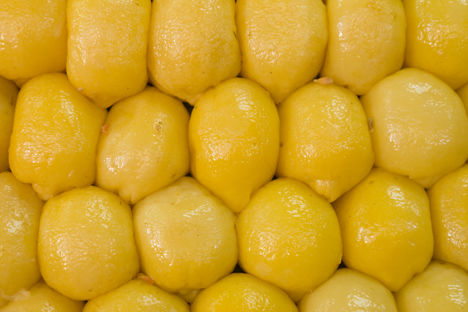
Ingredient focus: preserved lemon
How many of us have a half-finished jar of preserved lemons lurking in the back of our fridge? Pete Dreyer explores the different ways these incredible preserved fruits can add flavour to all manner of dishes.
Ingredient focus: preserved lemon
How many of us have a half-finished jar of preserved lemons lurking in the back of our fridge? Pete Dreyer explores the different ways these incredible preserved fruits can add flavour to all manner of dishes.
The need to preserve food has existed as long as we have, more or less – as soon as our ancestors picked, dug up or caught something for food, there existed an immediate need to preserve it. Ancient civilisations figured out pretty quickly that food could be dehydrated to stop it spoiling, but the discovery that salt could be used to preserve fresh ingredients was undoubtedly a landmark moment for humanity and how we eat. Seasonality and freshness is especially in vogue at the moment, but the work being done at pioneering restaurants like Noma in Copenhagen shows that even today we are still learning about the many possibilities offered by the magic of salt and osmosis.
Like many pickled and preserved foodstuffs, lemons were originally preserved so that they could be eaten outside of their season. Lemons have been a workhorse of Mediterranean and north African cuisine for centuries, but they can only be harvested for six months of the year at the very most – Amalfi and Sorrento lemons, for example, are generally at their best between May and October. As early as the twelfth and thirteenth centuries, literary evidence from north Africa suggests that lemons were being cured and preserved using salt – indeed, a twelfth century medical treatise by Egyptian doctor Ibn Jumay actually lists a recipe for preserving lemons, one that is remarkably similar to modern day techniques. He promoted preserved lemon as a cure for various ailments, and he may well have been onto something – the bacteria developed during the fermentation process are extremely good for your digestive system, but lemons would later be used as a cure for scurvy thanks to their rich vitamin C content.
Since first originating in north Africa, preserved lemons have spread across the world. They have grown into a staple of Mediterranean and Middle Eastern food, and even travelled as far as India and Southeast Asia. Whilst fresh lemons boast the aroma and oil of the zest and sharpness of the juice, preserved lemons are a different beast entirely – the sharpness mellows, the lemon flavour intensifies and the salt and fermentation creates a punchy umami quality that lends incredible depth to dishes.
Most of us think first of north Africa when we pick up a jar of preserved lemons – anyone who has eaten a good tagine will know how a small amount of preserved lemon completely transforms its flavour – but the uses of preserved lemon in north Africa stretch further still. It pairs up extremely well with virtually any meat or fish – chicken, beef and lamb are all commonly cooked with preserved lemon, as well as white fish and even vegetables like cauliflower, carrot and potato. You can slice up your preserved lemon and add it to a marinade before grilling, or add it to a slow-cooked stew (be warned though, you only need a small amount – preserved lemons are powerful, and they get stronger in taste the longer you leave them). In Cambodia, preserved lemons are added to a traditional chicken soup called ngam nguv, giving it that salty-savoury complexity that is typical of Southeast Asia.
Preserved lemons are excellent eaten fresh too – they’ll often require a little rinse first to get rid of any excess salt, but after that, you can add them to all manner of things. We’re used to seeing couscous served with preserved lemon stirred through, but it really adds another dimension to any grain or regular salad – you can either chop it up and toss it through, or you can blend it into a dressing to serve over the top. The same trick works for pasta dishes too – just chop up your lemon, gently infuse it into your oil, then toss in your pasta for a simple, delicious meal. Again, it’s best to err on the side of caution when it comes to quantity, but for the most part, anything you might use a fresh lemon for, you can add a preserved lemon instead for extra depth and flavour. Or even better, why not use both? The two are sufficiently different to give you some really interesting flavour dynamics, and the preserved lemon adds a pleasant chewy texture when left in slightly larger chunks.
The key is to understand the versatility of preserved lemons, and to think of them more as a stronger, saltier alternative to fresh lemons rather than a specialist ingredient for a single dish. You really can use them in almost anything. As a final note, once you’ve used all your lemons, don’t throw away that preserving liquid! It’s just as fantastic as the lemons themselves – a little bit splashed over a chicken as it roasts or stirred into a marinade or dressing makes a world of difference.


